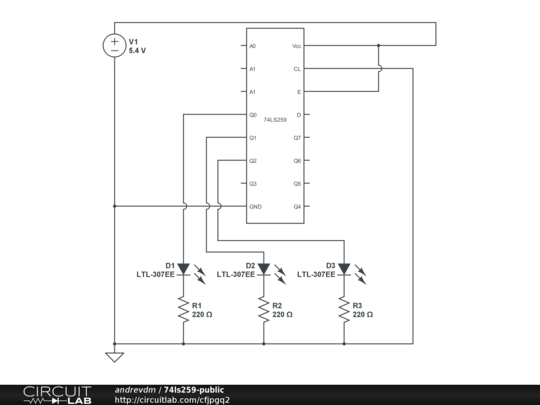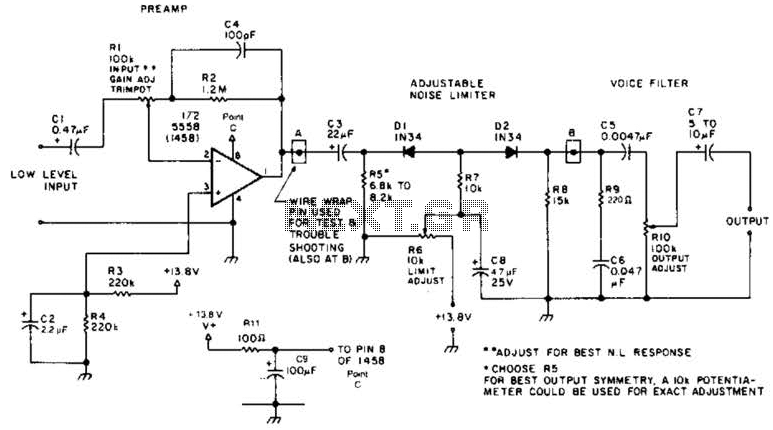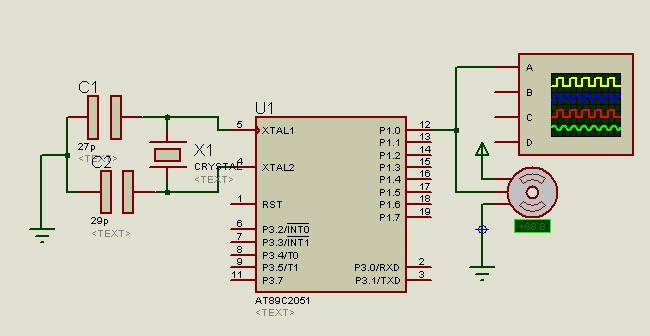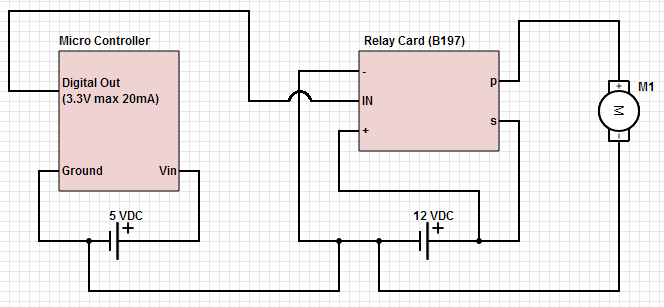
90 phase shifter circuit having a flat frequency characteristic
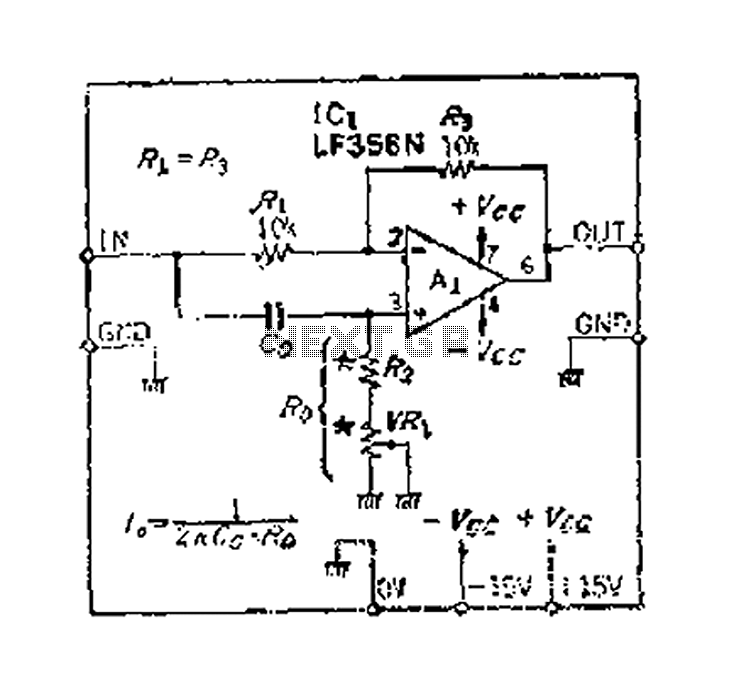
An accurate phase shift of 90 degrees can be achieved using a variable resistor (VR) and an operational amplifier (op-amp). The adjustment allows for a specific frequency to be manipulated. The phase shift can range from 180 degrees to 0 degrees, depending on the input frequency.
A circuit designed to achieve a precise 90-degree phase shift typically involves the use of an operational amplifier configured in a differentiator or integrator mode. The variable resistor (VR) serves as a tuning element, allowing for fine adjustments to the phase shift based on the input frequency. The operational amplifier provides the necessary gain and bandwidth to ensure that the circuit can respond accurately to variations in the input signal.
In this configuration, the input signal is fed into the op-amp, which processes the signal to generate the desired phase shift. The phase shift is influenced by the values of resistors and capacitors in the circuit, particularly through the feedback network. By adjusting the variable resistor, the phase angle can be manipulated, enabling a shift from 0 degrees to 180 degrees as required.
The center frequency at which the 90-degree phase shift occurs is critical and must be determined based on the application. The design should ensure that the op-amp operates within its linear range to maintain signal integrity. Additionally, careful consideration should be given to the bandwidth of the op-amp and the components used to ensure that the desired phase shift is achieved across the relevant frequency range. Overall, this circuit can be utilized in various applications such as signal processing, communication systems, and control systems where precise phase manipulation is essential.As an accurate phase shift at 90, may be put R. Gao with a specific frequency into play with a variable resistor VR, P crown. Adjustment. And the use of OP amplifier differenti al input in, a 1/2 O-Fe. R, generated at +9 00 phase shift (phase advance), if the input frequency, OrV.. The range of variation of the phase will house between 180 © ~ O o change. In terms of generating 90. Frequency phase shift was the center of the frequency fed from the phase angle i
A circuit designed to achieve a precise 90-degree phase shift typically involves the use of an operational amplifier configured in a differentiator or integrator mode. The variable resistor (VR) serves as a tuning element, allowing for fine adjustments to the phase shift based on the input frequency. The operational amplifier provides the necessary gain and bandwidth to ensure that the circuit can respond accurately to variations in the input signal.
In this configuration, the input signal is fed into the op-amp, which processes the signal to generate the desired phase shift. The phase shift is influenced by the values of resistors and capacitors in the circuit, particularly through the feedback network. By adjusting the variable resistor, the phase angle can be manipulated, enabling a shift from 0 degrees to 180 degrees as required.
The center frequency at which the 90-degree phase shift occurs is critical and must be determined based on the application. The design should ensure that the op-amp operates within its linear range to maintain signal integrity. Additionally, careful consideration should be given to the bandwidth of the op-amp and the components used to ensure that the desired phase shift is achieved across the relevant frequency range. Overall, this circuit can be utilized in various applications such as signal processing, communication systems, and control systems where precise phase manipulation is essential.As an accurate phase shift at 90, may be put R. Gao with a specific frequency into play with a variable resistor VR, P crown. Adjustment. And the use of OP amplifier differenti al input in, a 1/2 O-Fe. R, generated at +9 00 phase shift (phase advance), if the input frequency, OrV.. The range of variation of the phase will house between 180 © ~ O o change. In terms of generating 90. Frequency phase shift was the center of the frequency fed from the phase angle i
